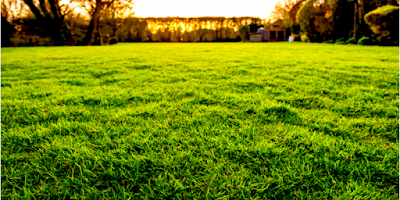Grass determination depends on assumptions for turf use and turf quality, site conditions, and support (time and cost) necessities. The seed should be adjusted to the site. A helpless seed decision prompts a helpless yard. At most lawn service winnipeg shows its better service to the customers than other services.
Cool Season Turfgrasses

Kentucky Bluegrass (Poa Praetensis)
- Generally, sumptuous needs abundant water and manure grows in 15 to 27 days – around 3 weeks.
- The tremendous variety between cultivars
- Spreads by rhizomes. Recovers well from harm and fills in uncovered spots well
- Prefers radiant, very much depleted site with pH 6.0 to 7.0. A few assortments display a little shade resistance
- Generally medium to high support necessity
- There are no endophyte upgraded assortments
Lasting Ryegrass (Lolium Perenne)
- Many improved cultivars, some with endophytes for creepy crawly and infection obstruction
- Tolerate a wide scope of conditions
- Good wear resilience
- Injured by low temperatures, ice, winter parching, and dry spell
- Germinates in 5-7 days – around multi-week.
- Spreads by tillering fills in gradually, can be clumpy
- Prefers radiant, all around depleted site with pH of 6.0 to 7.0
- Maintenance medium to high
Fine Fescue Hard, Crawling Red Sorts, Chewings
- Tolerant of dry spell and shade, yet not helpless waste
- Not open-minded toward weighty compost applications
- Germinates in around 14 days – fourteen days.
- Prone to harm in high rush hour gridlock regions
- Hard and chewings spread by turners, crawling red by rhizomes
Crawling Red Fescue
- Most viable of fine fescues with Kentucky twang
- Higher requirements for the water system and compost than other fine fescues
Chewings fescue
- Tolerates nearer cutting better compared to hard fescue
- Survives well under low richness
- Prefers cool summer
Hard Fescue
- Tolerates warmth, dry season, and low ripeness better than crawling and Chewings fescues
- Excellent for low support turf
- Slower to set up than different fescues
- Some hard fescues are endophyte upgraded
Tall Fescues (Festuca Spp.)
- Many improved fine-bladed assortments; more established assortments (for example K-31) are coarse finished
- Excellent wear resistance and resilience to troublesome developing conditions after grounded
- Drought open-minded in light of broad root framework
- Prefers sun yet open-minded toward some shade
- Susceptible to winter injury
- Germinates in around 14 days
- Some are endophyte improved
- Spreads by tillering. Reproducing to create rhizome spreaders is being investigated. Clumpy in blended stands or under helpless upkeep
- Dwarf cultivars require less cutting
- Maintenance low to medium
Exceptional Use Grasses
- bentgrass: Used to be well known as a result of its manicured appearance. Still utilized on golf greens and fairways. Not by and large utilized in yards given its extraordinarily high upkeep. Requires low cutting.
- rough stalk country (Poa trivialis): Is utilized in obscure wet spots as it were. Not attractive elsewhere.
- yearly ryegrass: speedy developing, brief, modest, foundation grass. Regularly in “speedy develop” and work for hire’s blends. Bothersome.
- alkali grass: Adapted for beachfront seaboards, salt-open minded.
Warm Season
Zoysia:
- Also filled in the South, however, is tough as far north as NJ
- Green from mid-May to mid-October. Extraordinary paint accessible for fake green
- Forms an overwhelming, obtrusive turf
- Recommended uniquely for summer homes or bound regions, for example, the tree grass among walkway and road
- Mowing stature is very short: ¾ to 1¼ inches
- Fertilize just in May, July, or August when effectively developing
- Maybe fire risk when lethargic


